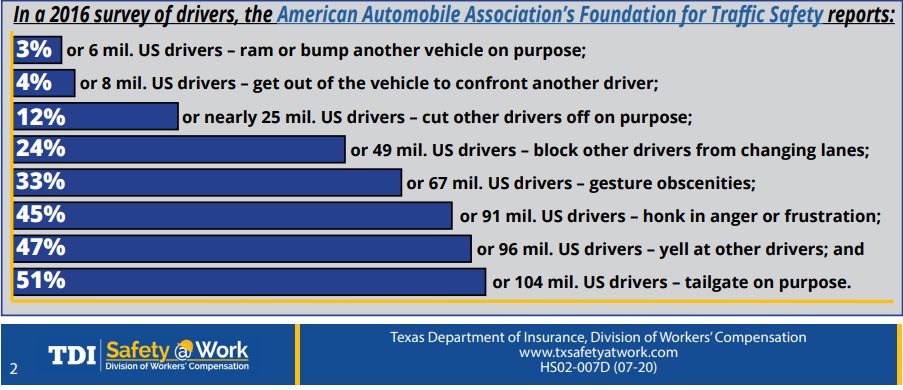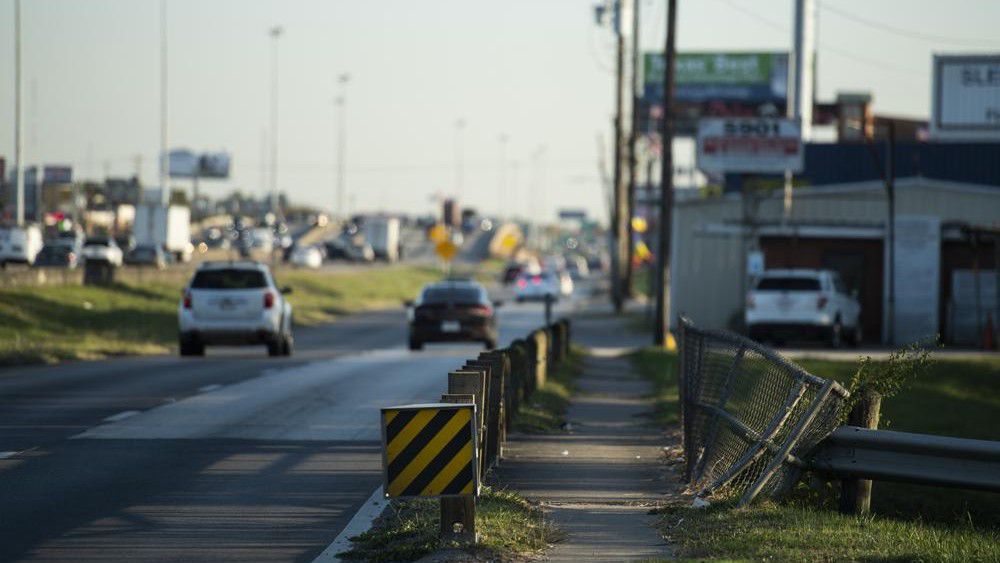TEXAS — As temperatures boil over in Texas, so too do the tempers of people behind the wheel. AAA stated that aggressive driving has become a matter of concern for many on the roadways.
According to an AAA survey, “nearly 9 in 10 respondents said they believed aggressive drivers were a ‘somewhat’ or ‘very serious’ threat to their personal safety.”
AAA categorizes aggressive driving as the following:
- Speeding in heavy traffic
- Tailgating
- Cutting in front of another driver and then slowing down
- Running red lights
- Weaving in and out of traffic
- Changing lanes without signaling
- Blocking cars attempting to pass or change lanes
- Using headlights or brakes to “punish” other drivers
But in extreme cases, aggressive drivers turn toward more dangerous behaviors to exhibit their frustration, which is then referred to as road rage. And those mannerisms are described below:
- Cursing and rude or obscene gestures
- Throwing objects
- Ramming
- Sideswiping
- Forcing a driver off the road
- Physical assault
This week police in Texas are investigating two cases of road rage that ended in violence. A husband bore witness to the fatal shooting of his wife during a situation of road rage in Hurst. And in another unrelated road rage incident, a man in Fort Worth, was shot in the hand after exchanging words with a driver.
Research shows that 75-80% of the U.S. population are considered drivers with high anger. In another study done by AAA in 2013, they asked drivers to explain why they became violent.
“The reasons were often trivial: ‘She wouldn’t let me pass,’ ’They kept tailgating me,’ or, as this driver accused of attempted murder explained, ‘He practically ran me off the road — what was I supposed to do?’” the study reads.
Have a look at some of the 2016 statistics regarding aggressive drivers from the American Automobile Association's Foundation for Traffic Safety.

State and local officials have issued words of caution for drivers to avoid run-ins with aggressive drivers and de-escalate situations of road rage.
The Texas Department of Transportation gave the following tips to avoid aggressive driving:
- Stay calm and keep your emotions in check.
- Plan ahead and anticipate delays.
- Focus on your own driving. Be cautious and considerate.
- Avoid creating a situation that may cause provocation.
- Give angry drivers plenty of room.
- Avoid eye contact.
- Use the left lane only when passing.
- Use your horn sparingly.
- Don’t tailgate or flash your lights behind someone.
- Don’t yell obscenities, respond to aggressive drivers, or make inappropriate hand gestures.
- If you’re concerned for your safety, call 911.
Being that Texas is one of the 35 states to allow open carry, this could pose a higher threat to people sharing the road with anger-fueled drivers. According to the AutoVantage Club, “37% of aggressive driving incidents involve a firearm.”
The American Psychology Association said most drivers who experience aggressive driving from another will respond in the same manner. Don’t let your pride get in the way of making it home safely. Keep the aforementioned tips in mind and don’t engage with road rage.





